Marty Schorr & Joel Rosen set the story straight and tell how the Baldwin-Motion Phase III Supercar Experience came together. (4 Videos)
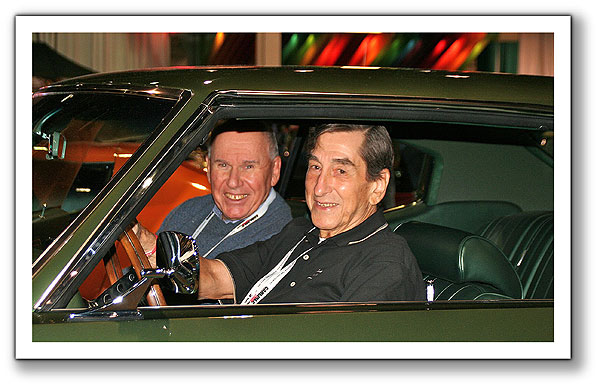 Dateline: 7.19.17 – This interview appeared in the July 2017 issue of Vette Vues Magazine. Part 2 coming soon! – Marty Schorr is the former editor of CARS Magazine, the founder of Vette Magazine, and is the current editor and chief of CarGuyChrolicles.com, and PMPR, an automotive public relations form. Joel Rosen is the former owner of Motion Performance, on Long Island, in New York, and currently owns and runs Motion Models, a world-renowned, scale military model company in Florida.
Dateline: 7.19.17 – This interview appeared in the July 2017 issue of Vette Vues Magazine. Part 2 coming soon! – Marty Schorr is the former editor of CARS Magazine, the founder of Vette Magazine, and is the current editor and chief of CarGuyChrolicles.com, and PMPR, an automotive public relations form. Joel Rosen is the former owner of Motion Performance, on Long Island, in New York, and currently owns and runs Motion Models, a world-renowned, scale military model company in Florida.
In June 2013 I had the pleasure of interviewing Marty and Joel on my radio program, “Far Out Radio.” And now, you get to read the story from the guys that made it happen – Marty Schorr and Joel “Mr. Motion” Rosen. The guys created a legend and we’re still talking about it over 50 years later!
You can enjoy Part 2 of this conversation, HERE.
Scott: Marty, Joel, welcome to the program.
Marty & Joel: Scott, we’re here, we’re here! (laughs)
Scott: Great to have you here all the way from Florida. You never thought it would go this long, did ya? (laughs)
Joel: I never thought I’d live this long!
Marty: (Laughing) We never thought it would go past the 1970s!
 Scott: Really? And here you are, my goodness. So, now that I have you both here, I’m curious before we get into the story, have you ever been on a radio program like this together, talking about what you have done?
Scott: Really? And here you are, my goodness. So, now that I have you both here, I’m curious before we get into the story, have you ever been on a radio program like this together, talking about what you have done?
Joel: Oh yes, we’ve done a few programs and some television shows. A number of television shows.
Marty: Yea, we’ve done it and we’re still not tired of each other, which is amazing. (laughs)
Joel: That’s what he says! (both guys laughing)
Scott: It sounds like you are both soul brothers to me. So, were you guys bench racing over some beers, or which one of you came up with the Baldwin-Motion idea first? How did this all get started?
Marty: Well, it’s hard to say who came up with it first; I’d have to give the nod to Joel, because he was working on the cars day-to-day, hour-to-hour. Once his mind started working, you know, it didn’t stop. He probably took one look at the 396 Camaro and said, “A 427 will drop right in there.” And that’s what started the whole thing.
Joel: Yea, that’s pretty much what happened. You know, I just figured if there were people coming to me, from-near-and-far, that if I could hook up with a Chevrolet dealer, why not offer a new car, whatever way the customer wanted to buy it? I did my homework and outline, like you do when you go to college, you know, A-to-B-to-C-to-D, and all that kind of stuff, and went over and pitched my idea to Baldwin Chevrolet.
I showed them what we had been doing, articles that Marty was writing at the time about me, and low-and-behold, they went for it! This was, with few exceptions, (Yenko Chevrolet and Nicky Chevrolet) almost unheard of back in that day.
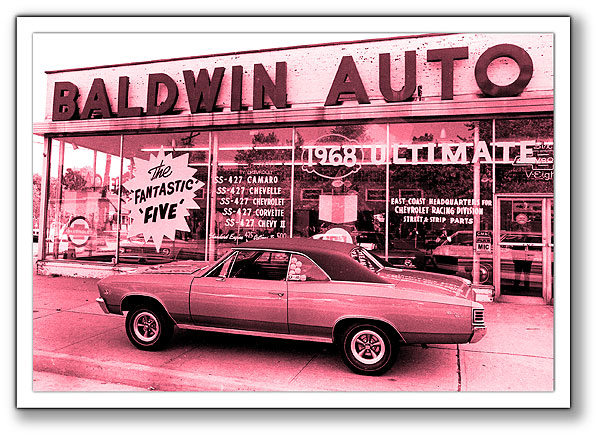 Marty: Well, especially when Baldwin Chevrolet was a Mom & Pop store that sold lots of pickup trucks and trucks of the trades and sedans and station wagons, you know, family cars. It was a very small dealership; it was not on the “performance car” radar screen. It wasn’t like so many of the big dealerships, as far as performance cars was concerned.
Marty: Well, especially when Baldwin Chevrolet was a Mom & Pop store that sold lots of pickup trucks and trucks of the trades and sedans and station wagons, you know, family cars. It was a very small dealership; it was not on the “performance car” radar screen. It wasn’t like so many of the big dealerships, as far as performance cars was concerned.
But they saw a potential to make money. And that’s what it was really all about – to move cars. It was a dealership that probably wouldn’t have moved that many Camaros, or Chevelles, had we not put that deal together.
So, it was kind of amazing that they went for it. And once they did go for it, they really didn’t want to stop, because Joel came up with our signature “Phase III” packages, you know, for Impalas and Biscayne (their ultimate sleeper supercar!), and everything that Chevrolet made (even Vegas by 1970-1971!) you know, Joel was willing to put a package into it!
So, Baldwin Chevrolet was happy, Joel was happy, I was happy, and you know, the public was certainly happy. The main issue Scott, was that neither Joel nor I ever expected that one day these cars would be put up on pedestals and sell for outrageous amounts of money the we could have never possibly imagine. (some of the cars going well over 10-times their original expensive price)
Joel: And just to give you an example of the small size of the original Baldwin Chevrolet dealership, today it’s a CVS drug store!
Scott: Oh, boy! (everyone’s laughing!)
Marty: Really, that’s the truth! I don’t think the showroom with the glass wall around it held more than three or four cars. It was that small!
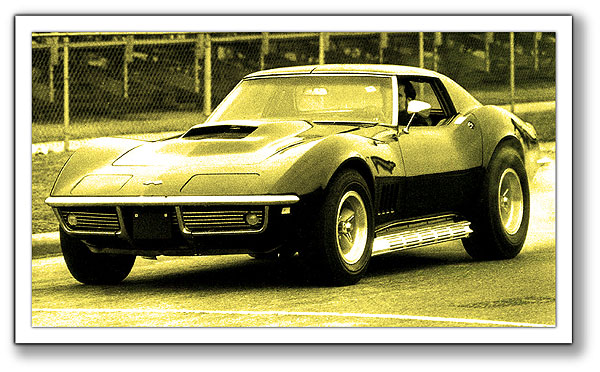 Joel: One of the keys to the success of the program fortunately was a fellow named John Mahler, who was a drag racer, like I was. John understood performance, and he had to foresight to see that this would be a good thing to really give a shot at, and he helped up tremendously. He helped us pitch the thing to the owners and was convinced that that maybe this could work. And ah, it just did!
Joel: One of the keys to the success of the program fortunately was a fellow named John Mahler, who was a drag racer, like I was. John understood performance, and he had to foresight to see that this would be a good thing to really give a shot at, and he helped up tremendously. He helped us pitch the thing to the owners and was convinced that that maybe this could work. And ah, it just did!
Marty: John was the Baldwin Chevrolet Parts Manager.
Joel: Yea, he was the parts manager, right.
Marty: John was the guy who would be ordering the replacement motors and stocking the speed equipment over in the shop. It was one of those deals that kind’a fell into place. It made a lot of sense, and together with the marketing that we did; we sold a lot of cars, and met a lot of people in strange places. I think Joel exported cars to the Middle East, to Europe; and cars went to Canada all the time. We even shipped cars to Hawaii.
It was kind of an amazing time when you look back at it because the car magazines in the country, Scott, were mostly based in California. And the California magazines really didn’t like to do stuff on east coast racers and shops and whatever. Sure, they did stuff on Garlits and Jenkins, and all the big guys, but they totally missed the boat on our deal and that left it open for me at CARS Magazine to do as much as I wanted. Plus, Joel was willing to dyno-tune my road test cars help and any way possible. So, we had a wonderful deal. People today collect the advertisements that I produced for the program that ran in CARS Magazine! So, it’s gotta be all good!
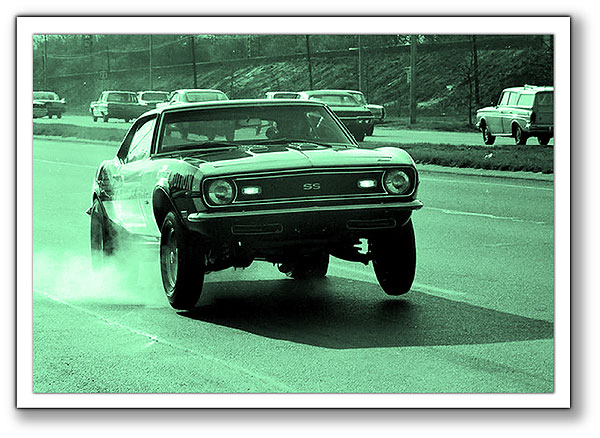 Joel: The public really went for the program. And of course, as we got into that era, we had a lot of guys that were out fighting in Vietnam, and we mailed an awful lot of stuff, free of charge, over seas to the soldiers. Anybody that asked for anything got it. They really didn’t have anything else to do other than to than fight, and then read whatever they could get. We did quite well with that and made quite a few people happy. You know, guys planning on coming home and picking up their car and all that. (check out Dave Ankenbauer’s 1972 Phase-III 454 Corvette in the March 2012 issue of Vette Vues) So it just kind’a spread!
Joel: The public really went for the program. And of course, as we got into that era, we had a lot of guys that were out fighting in Vietnam, and we mailed an awful lot of stuff, free of charge, over seas to the soldiers. Anybody that asked for anything got it. They really didn’t have anything else to do other than to than fight, and then read whatever they could get. We did quite well with that and made quite a few people happy. You know, guys planning on coming home and picking up their car and all that. (check out Dave Ankenbauer’s 1972 Phase-III 454 Corvette in the March 2012 issue of Vette Vues) So it just kind’a spread!
Scott: I had Wil Cooksey on the program a few weeks ago and he told me that his car dreams were what kept him going when he was In-Country in Vietnam. And when he was taking his six-month break in Hawaii, that was the first time he saw a Corvette, and it really grabbed him and made him say, “I want one of those!” So I understand what you mean.
Guys, I’ve got the official book, “Motion Performance: Tales of a Muscle Car Builder” right here! Here’s a reality check, on page 48 you’ve got one of your first ads, for the 1967 SS-427 Camaro. The ad says, “$3,650! Dyno Tuned and Ready to Wail!” The car looks astonishingly stock, like a nice, SS Camaro, with American mag wheels. What were you doing to the cars to juice them up, besides dropping in the 427 big-block engine?
Joel: Well, we would do the initial conversion, and then I came up with some packages for the suspension. We got together with a company in Philadelphia that made high performance shocks, Cure-Ride. And then we had another company that that was in the area that was called ET and they came up with the traction bars. Once we got started and we got a great affiliation with Hooker Headers.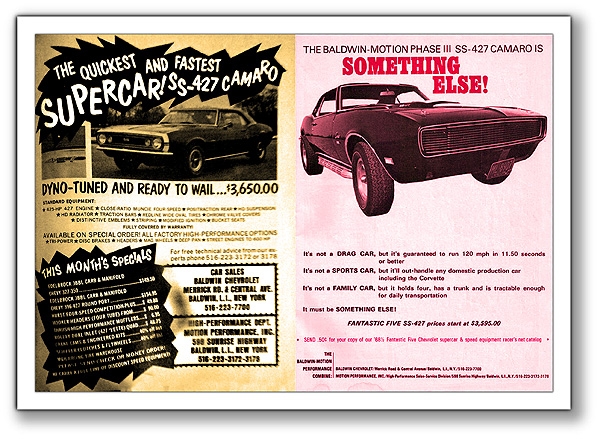 Then at some point there was a company called OK Custom Headers that made a lot of side-exhaust headers for our cars, which was unique at that time to have a complete side-exhaust header system for lets say a Camaro or a Chevelle or a Nova, that kind of thing.
Then at some point there was a company called OK Custom Headers that made a lot of side-exhaust headers for our cars, which was unique at that time to have a complete side-exhaust header system for lets say a Camaro or a Chevelle or a Nova, that kind of thing.
So that helped things along too. But pretty much the whole thing started, but if you want to know how it all came together, we have to go back farther when I met Marty in Brooklyn. I was doing my, quote-un-quote “apprenticeship” at a little small gas station in Fort Apache, (chuckle) down in Brooklyn. Ah, not a great area at the time. I’m not sure if it’s good now.
Ah, but I was a sports car racer, actually. And then I got married in a ’58 Corvette! I belonged to a sports car club, which was “SSSC& BDS”, which stood for the “South Shore Sports Car Club & Beer Drinking Society”. (now everyone’s chuckling) The club gave an annual hill climb up in what they called “The Jewish Alps”, up near Monticello, in upstate New York. So we decided that we were going to stay at the Hotel Hilly up there, which was at the base of the hill where the hill climb was.
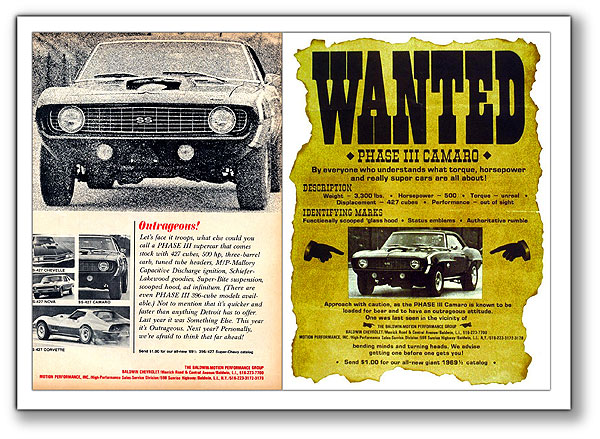 At that point in my life I was a little nutty about driving. Back then, of course, the hill car racers weren’t required to have roll bars. But I was also in the Air Force Reserves, so I stole a seatbelt out of one of my C19s that I flew, and I put it in the ’58 Corvette. I then proceeded on up the hill and hit a tree at about a 110-miles-per-hour! I rolled over a couple of times through the air and landed on the wheels. I got a quick education on how you’re supposed to drive “with your head” not “with your foot!” I was very, very fortunate with no roll bar that the car came down on the wheels! Ah, totaled the car, which was a real shame because it was really a good car. (laughing)
At that point in my life I was a little nutty about driving. Back then, of course, the hill car racers weren’t required to have roll bars. But I was also in the Air Force Reserves, so I stole a seatbelt out of one of my C19s that I flew, and I put it in the ’58 Corvette. I then proceeded on up the hill and hit a tree at about a 110-miles-per-hour! I rolled over a couple of times through the air and landed on the wheels. I got a quick education on how you’re supposed to drive “with your head” not “with your foot!” I was very, very fortunate with no roll bar that the car came down on the wheels! Ah, totaled the car, which was a real shame because it was really a good car. (laughing)
From there, because of the resistance from the family, we ended up with a Corvair Monza. (everyone’s laughing) And me being a lead-foot, every time I got on it, the Corvair did the thing they were famous for; knocking the belt off the fan. So I had to stop wherever I was and put the fan belt back on. Finally that happened at my wife’s grandfather’s funeral, and I said, “This has got to stop! I can’t handle this any more!” (not “getting on it” wasn’t an option)
So, I got out of the Corvair and I got a ’62 Corvette, and ran that in a bunch of hill climbs, gymkhanas, and motocross kind of stuff. Then when the ’63 came out, that was obviously a new car that was really going to make some, make some hey! In my eyes anyway, that’s exactly what I knew they’d do. We had, what I believe, was that we may have had the first ’63 Fuelie in the state.
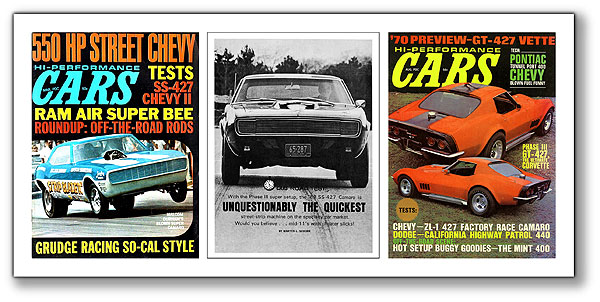 I decided that since I was a, quote, unquote, a “road racing type sports car racing type, I would paint a racing strip down the middle of my dark Daytona Blue Sting Ray Coupe. I did a big, wide white stripe with two bordering stripes from the nose all the way back to the tail. The so-called aficionados promptly named my Corvette, “The Skunk.”
I decided that since I was a, quote, unquote, a “road racing type sports car racing type, I would paint a racing strip down the middle of my dark Daytona Blue Sting Ray Coupe. I did a big, wide white stripe with two bordering stripes from the nose all the way back to the tail. The so-called aficionados promptly named my Corvette, “The Skunk.”
Then I was running a lot of sports car races, which I won. I won the overall sports car championship on Long Island, because everybody said that, “Corvettes can’t run in motocross’ because the solid axel doesn’t handle.” And here we have the ’63 Corvette that all of a sudden “handled”, and was super fast, so that worked out quite well.
Then drag racing happened. One night I decided I was going to go out to the famous Roosevelt Raceway. We had three tracks on Long Island at the time. Roosevelt Raceway was a eighth-of-a-mile. Islip Speedway was an eighth-mile, and we had West Hampton Speedway, which was for the big-boys on the quarter-mile strip. Later on we had National Speedway.
So I went out and bought a set of Atlas Bucrons (the tires were made of almost pure butyl rubber, with a groove around both edges – “cheater slicks”), which were the first street racing tires and I put them on my car. I still had headers, but I ran them through the mufflers, and I went out to this eighth-mile Islip Speedway, and I had no idea what I was doing, except I had pretty good reflexes.
So I get up on the line and I make my run, there was nobody else in the class, then they put me up for “Eliminator”! Nothing like this had never happened to me before. I get next to this guy and he going “BA-BA! WA-BA!” He’s got a big 409/425 Impala, and making all the noise in the world. And I’m going “Zoom! Zoom!” with my Vette. But ya know, we get the flag, and typical of a big Impala with a huge motor, he made holes in the ground, and I was gone!
That was it! I was hooked on drag racing!
Part 2 of my conversation with Mary Schorr and Joel Rosen will continue next month. The guys will talk about how the Baldwin-Motion cars were developed and “following” that endures to this day!
Marty Schorr’s car enthusiasts blog site… http://www.CarGuyChronicles.com
Joel Rosen’s Motion Models (WW II and pre-WW II ready made & custom models: tanks, ships, planes, fighter jets)…
http://www.MotionModels.com
 Summary of The Baldwin-Motion Experience:
Summary of The Baldwin-Motion Experience:
Back in the 1960s when Marty was the editor and chief of “Hi-Performance CARS Magazine”, Joel ran his speed shop, Motion Performance, in Baldwin, New York, and became the CARS Magazine “special projects” shop. Just up the road was Baldwin Chevrolet, a local “Mom & Pop” Chevy dealership. After the guys secured a racecar sponsorship deal with Baldwin Chevrolet, Marty and Joel pitched the concept of offering of a “supercar” version of the then-new 1967 SS-396 Camaro – of course, purchased through Baldwin Chevrolet.
Using his knowledge of performance parts and engine building, Joel designed a near-bullet-proof parts package and took care of the transformation from factory muscle car to supercar! While Joel had a basic package of performance parts, each car he built was tailored to the customer’s needs and desires. Yes, custom-built supercars. Customers could order from Baldwin Chevrolet a strippo-car and have Rosen install all the right go-fast parts, or the customer could order his factory muscle car or Corvette loaded with all the creature comforts they wanted, then Rosen would add the good stuff! While every Motion car has the basic Rosen-designed performance parts package, each car is different and unique.
For customers with deep pockets or a friendly banker, this was the to-die-for muscle car experience for Chevy lovers. However, many decades later, authenticating a “Motion car” can be challenging, as many were not well treated by their owners. Also, since Rosen sold the parts and badges through his shop, there are more than a few do-it-yourself “Motion” cars and some outright fakes. Today, Rosen helps collectors verify the authenticity of their Motion car.
Marty Schorr took care of the branding, advertising, catalogs, and PR. Rosen spun the wrenches and Marty spun the spin. As a young reader of CARS and a big fan of the Motion cars, Schorr’s ads were as cool as the cars. Marty authored the 2009 book, “Motion Performance – Tales of a Muscle Car Builder” published by Motorbooks. The cars had drop-dead, in-your-face aggressive good looks to go along with their ground-pounding performance – all with a 100% Chevy warranty! It was all, SO COOL!
This is the end of Part 1 of our conversation. This interview appeared in the July 2017 issue of Vette Vues Magazine. You can enjoy Part 2 of this conversation, HERE.! – Scott

